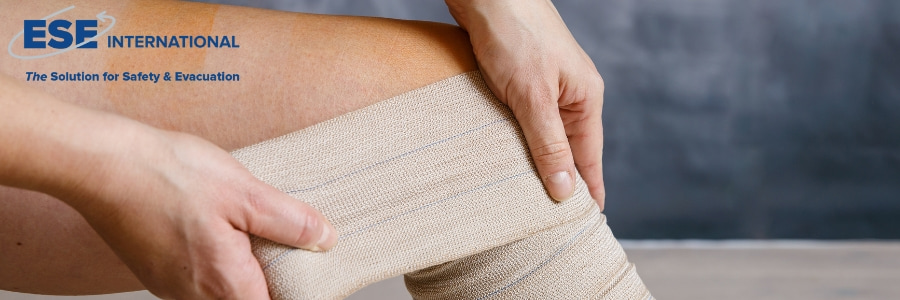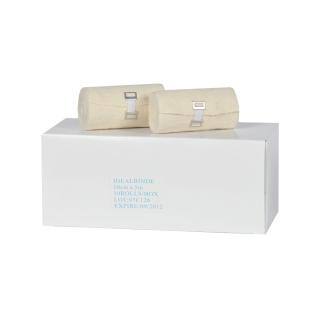Een ideaal zwachtel is een verbandmiddel die in vrijwel elke EHBO-kit aanwezig is. Vaak wordt het gebruikt om verwondingen te behandelen. Dit artikel lees je wat een ideaal zwachtel is, waarvoor het wordt gebruikt en hoe je het correct aanbrengt.
Wat is een ideaal zwachtel?
Een ideaal zwachtel (windsel) is een elastische zwachtel die wordt gebruikt om druk uit te oefenen op een specifiek gebied van het lichaam. Het is gemaakt van rekbaar materiaal waardoor het gemakkelijk aan te brengen is en zich aanpast aan de vorm van het lichaam.
Deze zwachtels worden vaak gebruikt bij verstuikingen, kneuzingen, en om verbanden op hun plaats te houden. De zwachtels zijn in onder andere de volgende breedtes te verkrijgen 4, 6, 8 en 10cm. De lengte is 5 meter.
Waarvoor gebruik je een ideaal zwachtel?
Een ideaal zwachtel wordt gebruikt om:
- In combinatie met synthetische watten wonddrukverband aan te leggen.
- Ondersteuning te bieden aan gewrichten bij verstuikingen of kneuzingen.
- Zwellingen te verminderen door druk uit te oefenen op het getroffen gebied.
- Verbanden te fixeren zodat deze op hun plaats blijven zitten.
- De bloedcirculatie te bevorderen door gecontroleerde compressie toe te passen.
Het kan worden toegepast op verschillende delen van het lichaam, zoals enkels, knieën, polsen en ellebogen.
Hoe gebruik je een ideaal zwachtel?
Voor het aanleggen van een ideaal zwachtel volg deze stappen:
- Voorbereiding: Zorg ervoor dat je de volgende materialen bij de hand hebt: een ideaal zwachtel, klemmetjes of tape om de zwachtel vast te zetten, en indien nodig een steriel gaasverband en verbandwatten voor onder de zwachtel.
- Positioneer de patiënt: Laat de patiënt in een comfortabele positie zitten of liggen, met het getroffen lichaamsdeel in een ontspannen en neutrale positie.
- Begin met wikkelen: Start met het wikkelen van de zwachtel net onder het getroffen gebied. Zorg ervoor dat je de zwachtel stevig, maar niet te strak, aanbrengt om de bloedcirculatie niet te belemmeren.
- Overlap de lagen: Wikkel de zwachtel met ongeveer de helft van de breedte van de vorige laag overlappend. Dit zorgt voor een gelijkmatige drukverdeling.
- Blijf wikkelen: Ga door met het wikkelen totdat je net boven het getroffen gebied bent. Zorg ervoor dat de zwachtel glad en zonder plooien is aangebracht.
- Bevestig de zwachtel: Gebruik verbandklemmetjes of tape om de uiteinden van de zwachtel vast te zetten. Zorg ervoor dat deze stevig vastzitten, maar nog steeds comfortabel zijn voor de patiënt.
- Controleer de zwachtel: Controleer of de zwachtel niet te strak zit. Dit kan je doen door het aan de patiënt te vragen. Of door de kleur en de temperatuur van de huid onder de zwachtel te controleren. De huid moet een normale kleur en temperatuur behouden.
Disclaimer: Laat behandelingen altijd uitvoeren door een getrainde Bhv’er, arts of andere EHBO-specialist. In geval van ernstige verwondingen, bel onmiddellijk 112 of zoek medische hulp.




